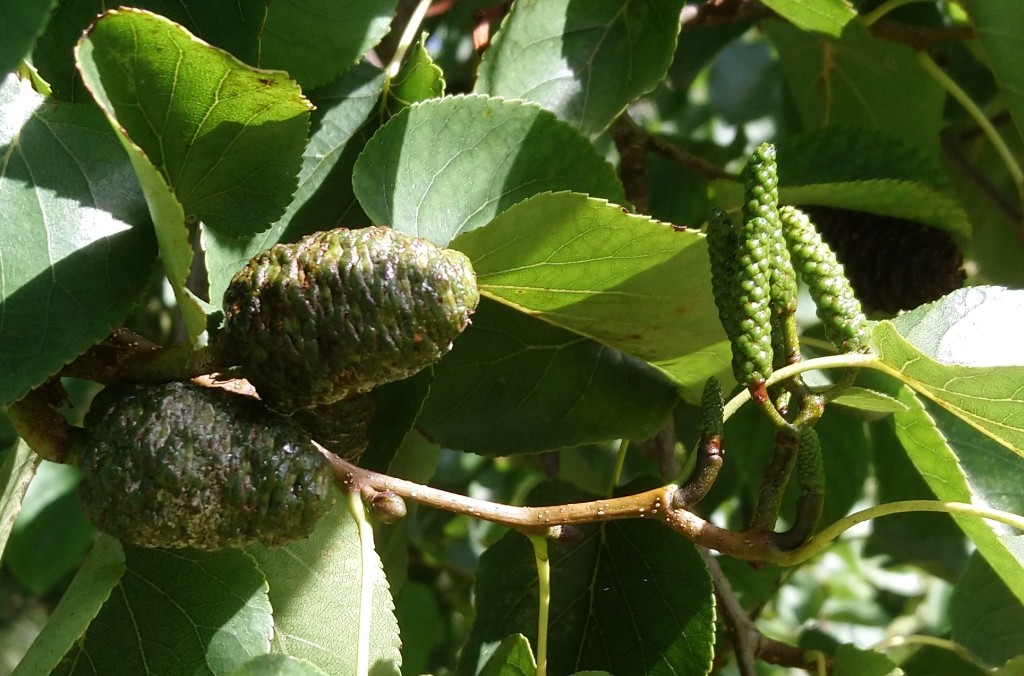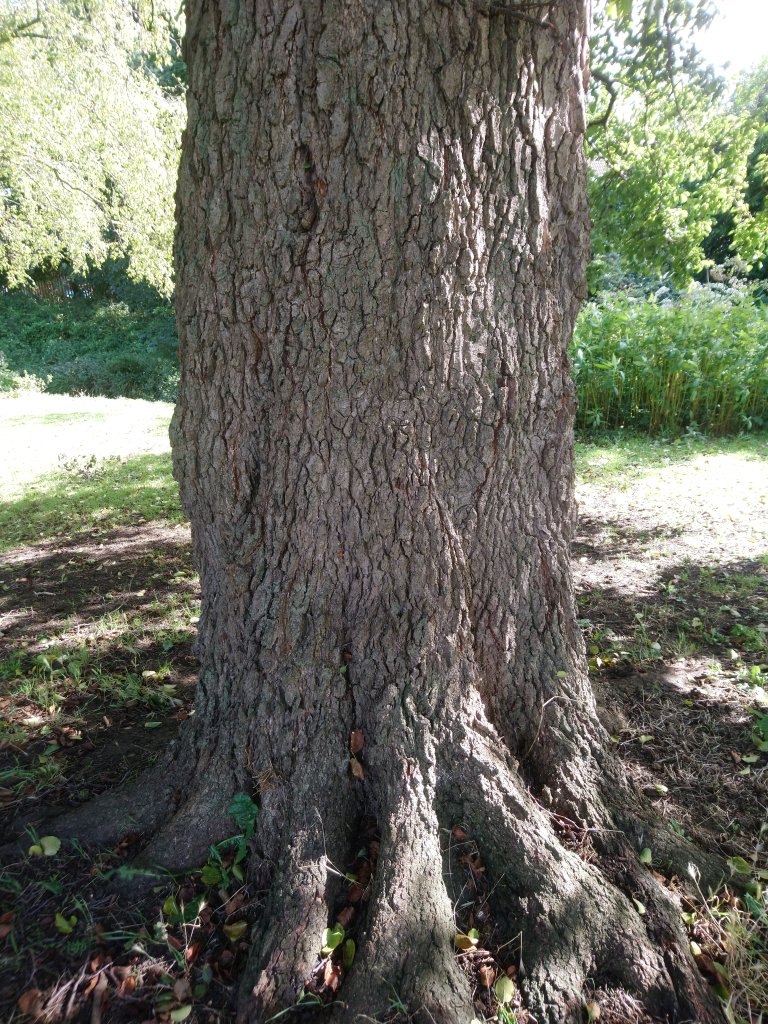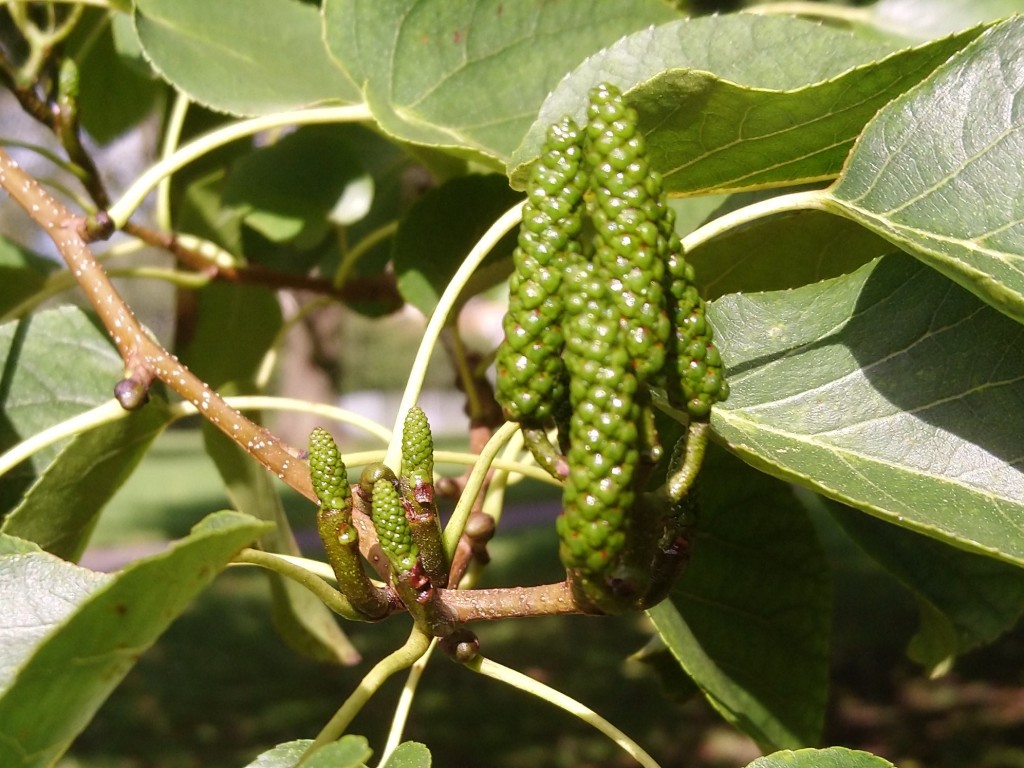
[017] Alnus glutinosa, Alder
Introduction
Alnus glutinosa, the Alder, is a common and widespread deciduous tree in the Birch family.
We know it simply as the Alder but it’s a European Alder or Black Alder or Common Alder or European Black Alder.
There are about forty species of alder within the genus Alnus, found across Eurasia and America but Alnus glutinosa is our only native species.
Taxonomy
Kingdom – Plants
Division – Vascular Plants
Class – Flowering Plants
Order – Fagales (Beeches, Chestnuts, Oaks, Walnuts and many other trees)
Family – Betulaceae (Birch, Alder, Hazel and Hornbeam)
Genus – Alnus (Alder}
Scientific Name – Alnus glutinosa
It was originally classified as a Beech as Betula glutinosa before the genus Alnus was defined.
Name
Alder comes from Indo-European roots and has always meant this tree. The Latin ‘alnus’ is cognate. Glutinosa means sticky or glutinous, coming from the resinous gum that covers the buds and young leaves.
Description
The Alder forms a tall, sturdy tree and the trunk has a grey, knarled bark. The leaves are rounded in shape, darker on the upper surface.


The leaves stay late on the tree and are green until late Autumn.
Reproduction
In many ways, Alders are similar to conifers. They are monoecious, which means that each tree simultaneously bears separate male and female flowers the male flowers are catkins and the female flowers eventually become cones. The similarity of Alder cones to coniferous tree makes them distinct from their close relatives, the Birches.
Female flowers start as erect green stalks and develop into cones, which stay on the tree until the following Spring before releasing their seeds – small, flattened nuts able to float downstream.
Male flowers form catkins in Spring as the cones from last year harden.
Habitat and use
Alnus glutinosa is common and widespread in Britain and most of Europe. It shares much of its range with Alnus incana, the Grey Alder, a similar species with which it hybridises. (The Grey Alder is native to Northern Europe but not the United Kingdom.)
Its natural habitats are forest edges, swamps and near rivers.
It is known for being the host to well over a hundred species of insects. Here are some [124] Parent Bugs, Elasmucha grisea, on a female cone.

It is also host to large numbers of species of fungi and lichen.
It has somehow been introduced in several countries and is considered an unwanted invasive plant in the USA and New Zealand.
It is used as a pioneer species and to stabilize river banks and can be cultivated as windbreak. Its timber is very durable underwater and has been used for the foundations of medieval cathedrals and in Venice. Its wood is also used decoratively sometimes as a veneer; and for smoking fish and other foods.
Its bark has been used in tanning and dyeing; as a treatment for swelling, inflammation and rheumatism; as an ingredient for toothpaste; and in many other herbal remedies.
The cones are sold in Britain as shrimp food and as a water treatment for aquariums.
Other Notes
The tree from which most of my pictures come is on the banks of the River Chelt.
See also
You may have already worked out that the closest relative of this tree is [051] the Silver Birch.







